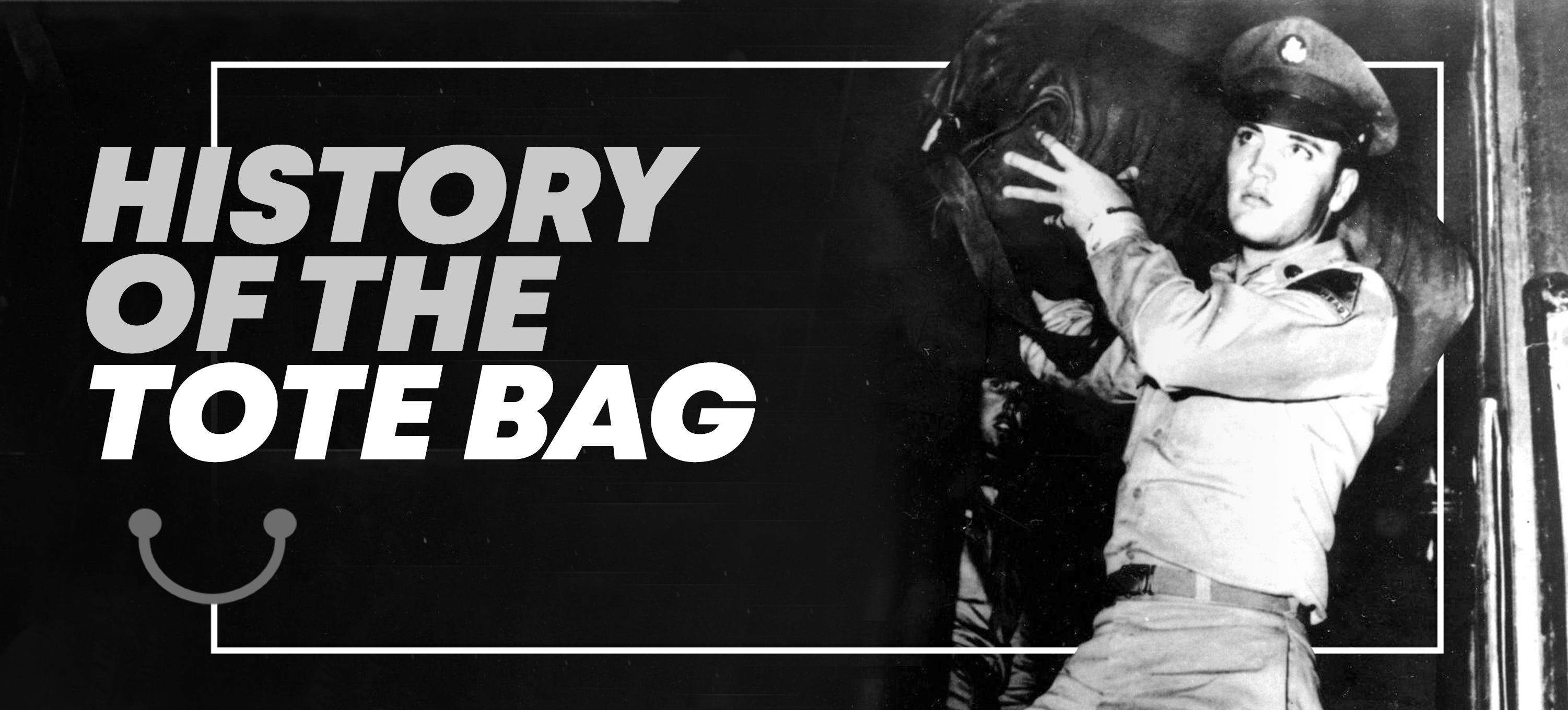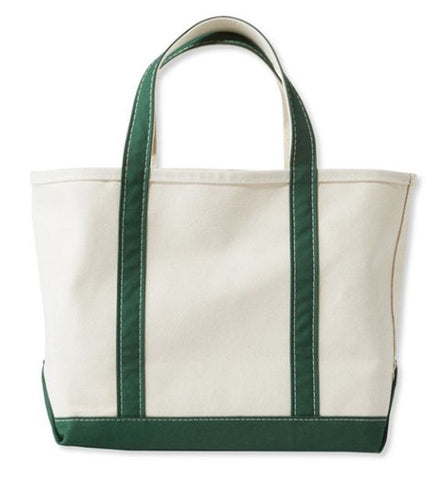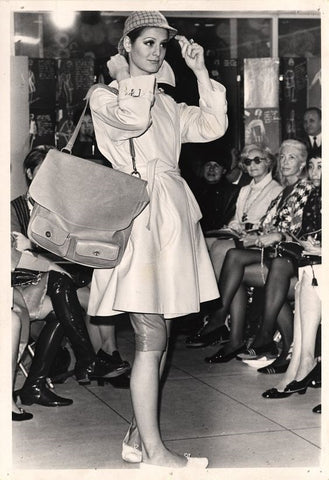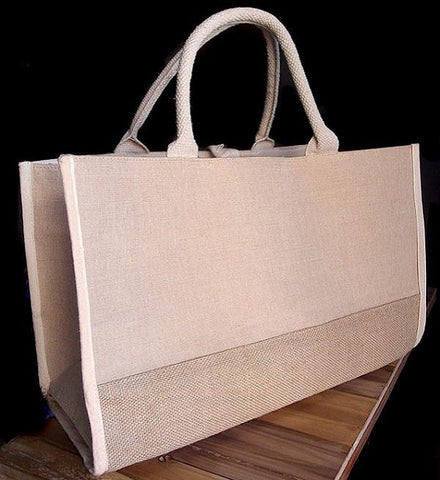
The tote bag as an accessory mixing beauty and utilitarianism is all the rage right now. Some use it as an eco-conscious statement in their fight against plastic when they go shopping or store food in their pantries. Others wear it as a fashion accessory that meets and exceeds all expectations of comfort and aesthetics. The tote bag is now a universal symbol of feminine functionality.
You can dress the tote bag up or use it in its raw return-to-nature shape and color. You can personalize it with everything that goes through your mind or wear it casually with your glam outfit for an edgy look. You can have one in every color possible and one in every size. Tote bags are versatile, elegantly simple, useful, and fun.
However, how did they manage to become so popular? When was the first tote bag worn? Who invented them? Today, we will look at the history of the tote bag and see its evolution from the beginning to present days.

The 17th Century – In the beginning, it was just a Word
The actual history of the tote bag does not begin in the 17th century. In fact, if you look at historical archives, you will see depictions of men and women in almost all cultures wearing some earlier forms of textile pouches and satchels to carry around their belongings. Leather, cloth, other vegetal fibers were all materials people used since the dawn of time to create all sorts of useful bags.
When it comes to tote bags, nevertheless, we can trace back the word tote – to tote, in fact – meaning to carry. Back in those days, toting meant carrying your stuff in some sort of a bag or sack. Those bags, while not likely similar to the totes we know and love today, seem to have been the precursors of our modern totes.
Since those first iterations of the early tote bags, the world moved on, and we had to spend some good hundred years until we got what we know today to have been the first official tote bag.
The 19th Century – The Age of Utilitarianism

Slowly but steadily, the word tote began moving from its verb status to a noun status. The 1940s is an iconic time stamp in the history of the tote bag, together with the great state of Maine. Officially, the tote bag was born in the forties in the shop of the emblematic outdoor brand L. L. Bean.
The famous brand came up with the idea of an ice bag in 1944. We still have the easily recognizable, legendary, large, boxy, canvas ice bag. Back then, the L. L. Bean ice bag was exactly that: a large, sturdy, durable canvas bag to carry ice from the car to the freezer.
It did not take people long to realize that they could use the bag for more than ice transportation. Bean’s bag was versatile and resilient to wear and tear. So what else could it carry?
Together with the first person that answered this question successfully, the ice bag became a hit and started its ascension as a staple of utility. During the 50s, the tote bag was the bag of choice for homemakers, who used the bags for groceries and household chores.
The Sixties – When Function met Fashion

Some things take hundreds of years to turn into emblems of fashion. The tote bag needed only 20 years and little to no effort. The father of the tote bag, L. L. Bean brand, reintroduced the ice bag in a newer, more feminine shape. The new bag looked like the old ice bag – so it was easily recognizable and an instant crowd pleaser – but it featured some elements of style and fashion (the now legendary color trim).
The 60’s design of the new Bean satchel took the old ice bag up a few notches. The most important element – and one that is still extremely popular today – is that canvas stood the test of time. People used to look at canvas as some sort of an industrial material, but canvas, just like denim, proved that from heavy lifting to fashion runways the path was short.
The new Bean canvas bag of the sixties is still available today. The brand is still making them in their original shape, size, and color scheme, but it also adds some new elements each year – such as seasonal coloring and more. Along the way, companies like L. L. Bean and others began adding leather handles to the tote bags, leather bottoms, all sorts of colored trims, zippers, prints, and so on.
Since L. L. Bean set the tone for the future of women’s accessories, other designers took things even further. The 60s came with turmoil, increased social and political awareness and comment, cultural changes, and plenty of fashion changes as well. In this flourishing new world, the old tote bag gained new life as well, becoming more and more visible in the streets as a purse or bag and not only as a grocery-carrying sack.

Bonnie Cashin - The Reign Supreme
During the sixties, American designer Bonnie Cashin created what we know today as being the Cashin Carry Tote. The bag was big, bold, and beautiful, coming with a modern flair and an easiness to its form and function that many tried (unsuccessfully) to copy.
Cashin’s tote bag took America by the storm. The Flower Power generation imposed a new culture altogether, changed poetry, music, and fashion. Their flowery clothes and vibrant colors matched perfectly the canvas loose bags they wore. Young men and women making history turned the flowy textile shoulder bags into an icon of an entire social and cultural movement.
The Eighties – The Advent of the IT Bag
In the eighties, legendary New York City bookstore The Strand introduced their own version of the textile tote bag, a model that is still visible and popular in the city as we speak. Made with natural cotton duck canvas and interior lining, the Strand Tote became a must-have for everyone looking for comfort, craft, design, usefulness, and beauty.
Wanting to keep the design fresh and surprising each year, both L. L. Bean and The Strand came up with innovation and exquisite additions. Their products inspired other manufacturers to rise up to the high standards and create a myriad of totes that match all tastes and needs. This is how we ended up with other iconic bags and purses, the Birkin coming to mind.
The Modern Age

Today, tote bags play many roles and meet many needs. Some designs speak to the fashionable side of the wearers, featuring zippers, Velcro, leather trims, badges, and more. Some, like the Strand totes, fulfill brands’ promotional needs. Many women wear canvas or cotton tote bags as fashion purses, while others keep them only for shopping. Together with the increased concern for the environment, tote bags also became reliable answers to the sustainability problem.
Everywhere you go, you see tote bags in a diversity of models, shapes, sizes, and materials that nobody imagined. From cotton to fashion burlap tote bags, the world is your oyster. You can find many featuring more than one color, and you can personalize yours just the way you want. With enough imagination and the right fabric, there is no stopping you.

Conclusion
We wanted to show you how the tote bag has evolved over the years of history and how it has become so popular from the beginning to its present days. What do you think about the history of the tote bag? Can you fill in the history blanks with new information? Feel free to share your discoveries.

